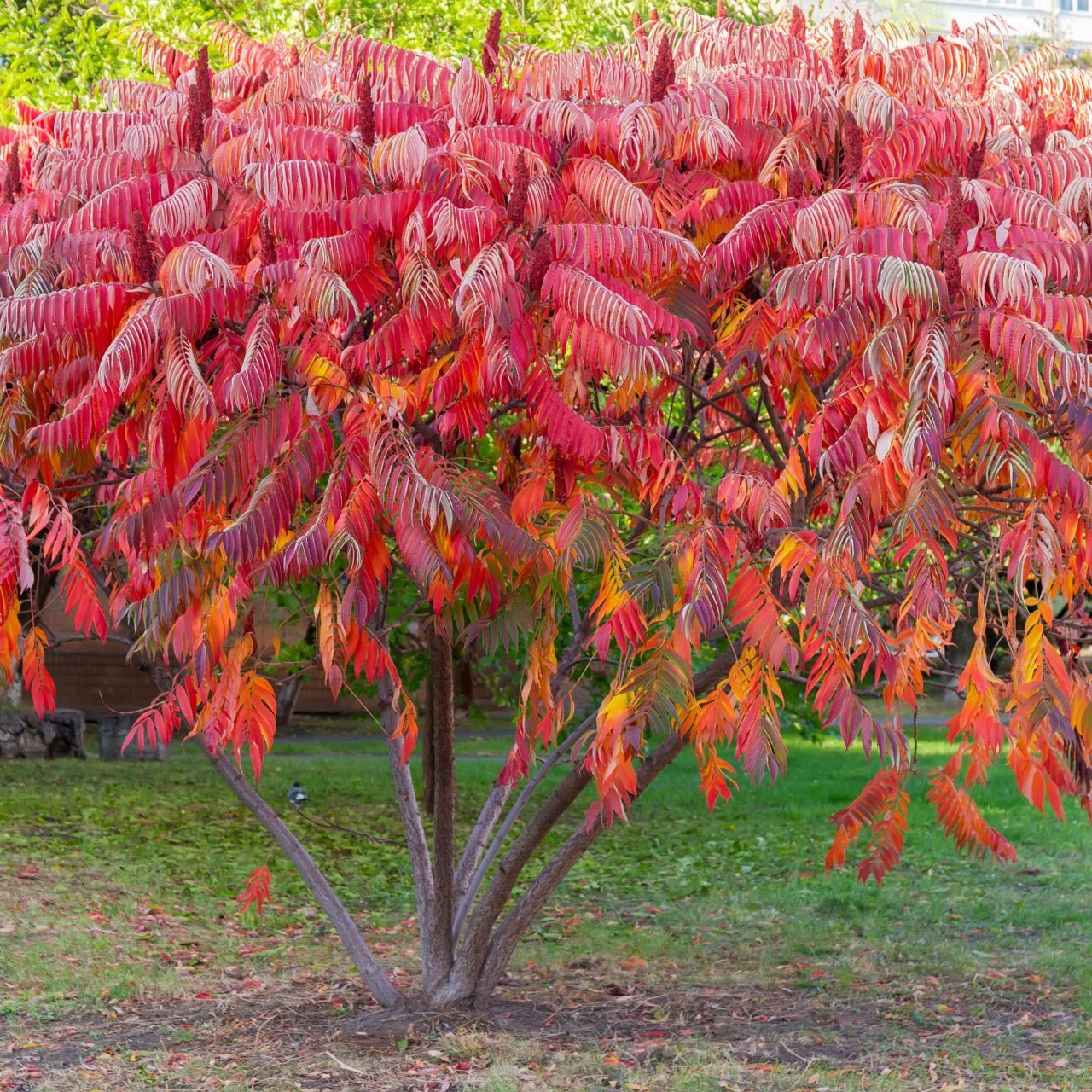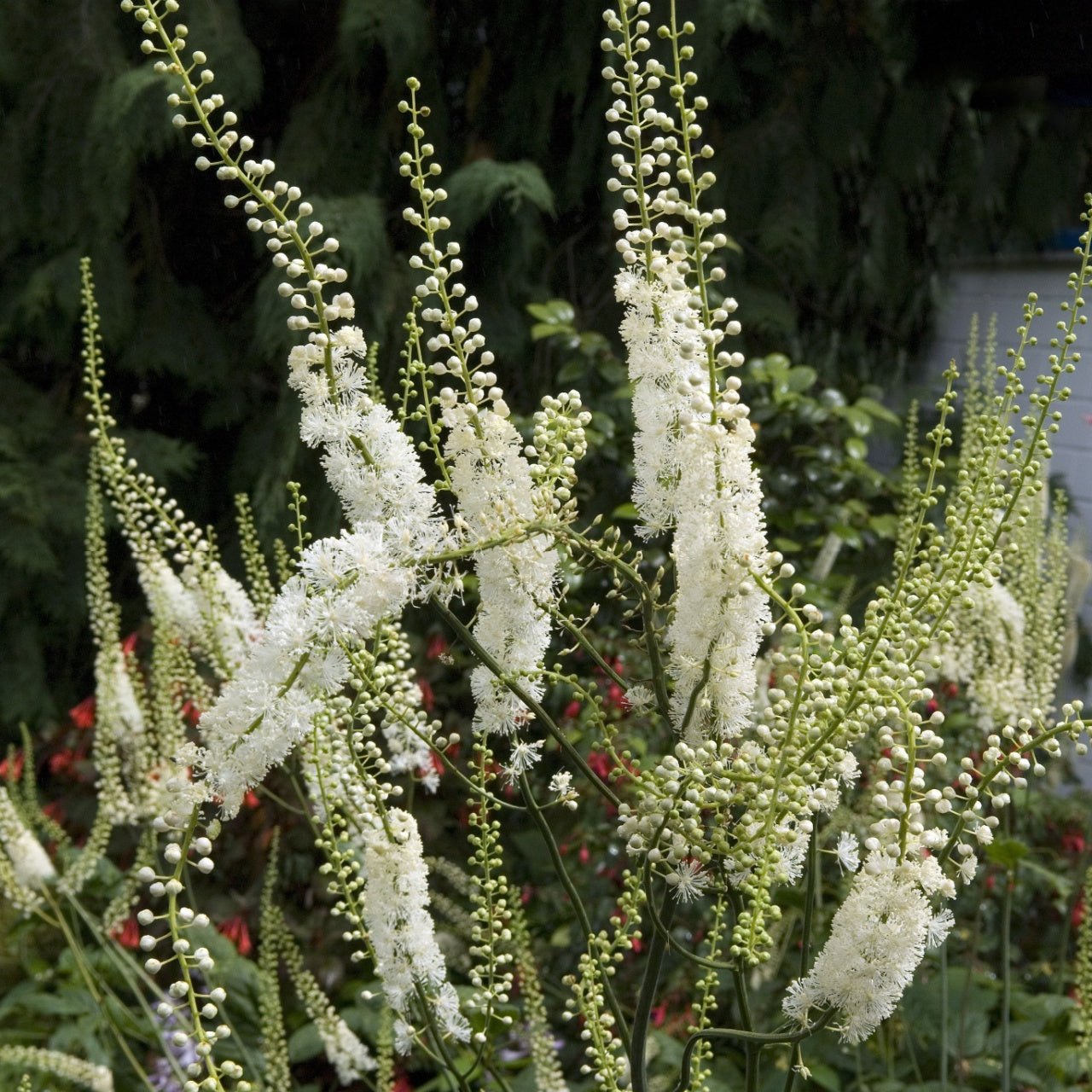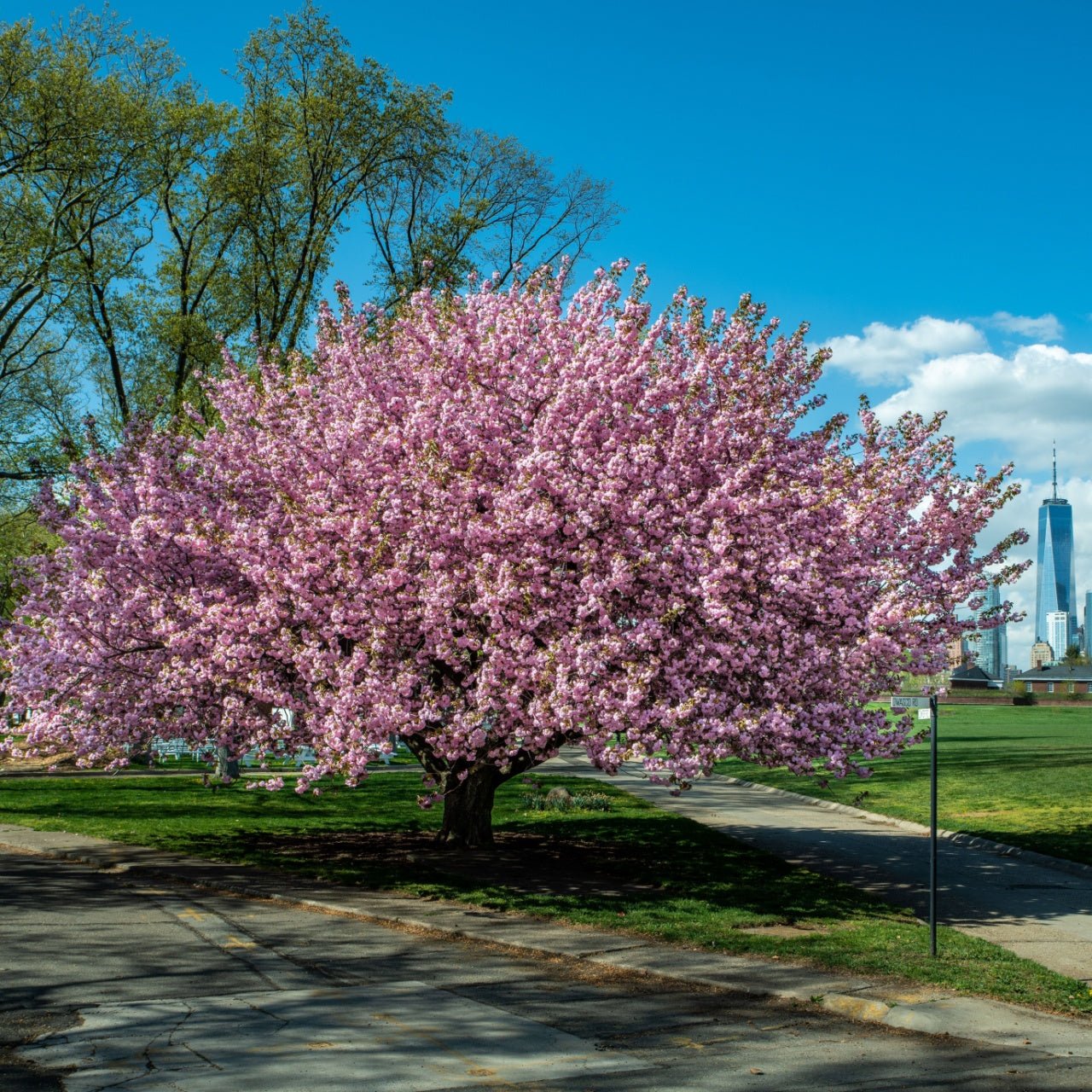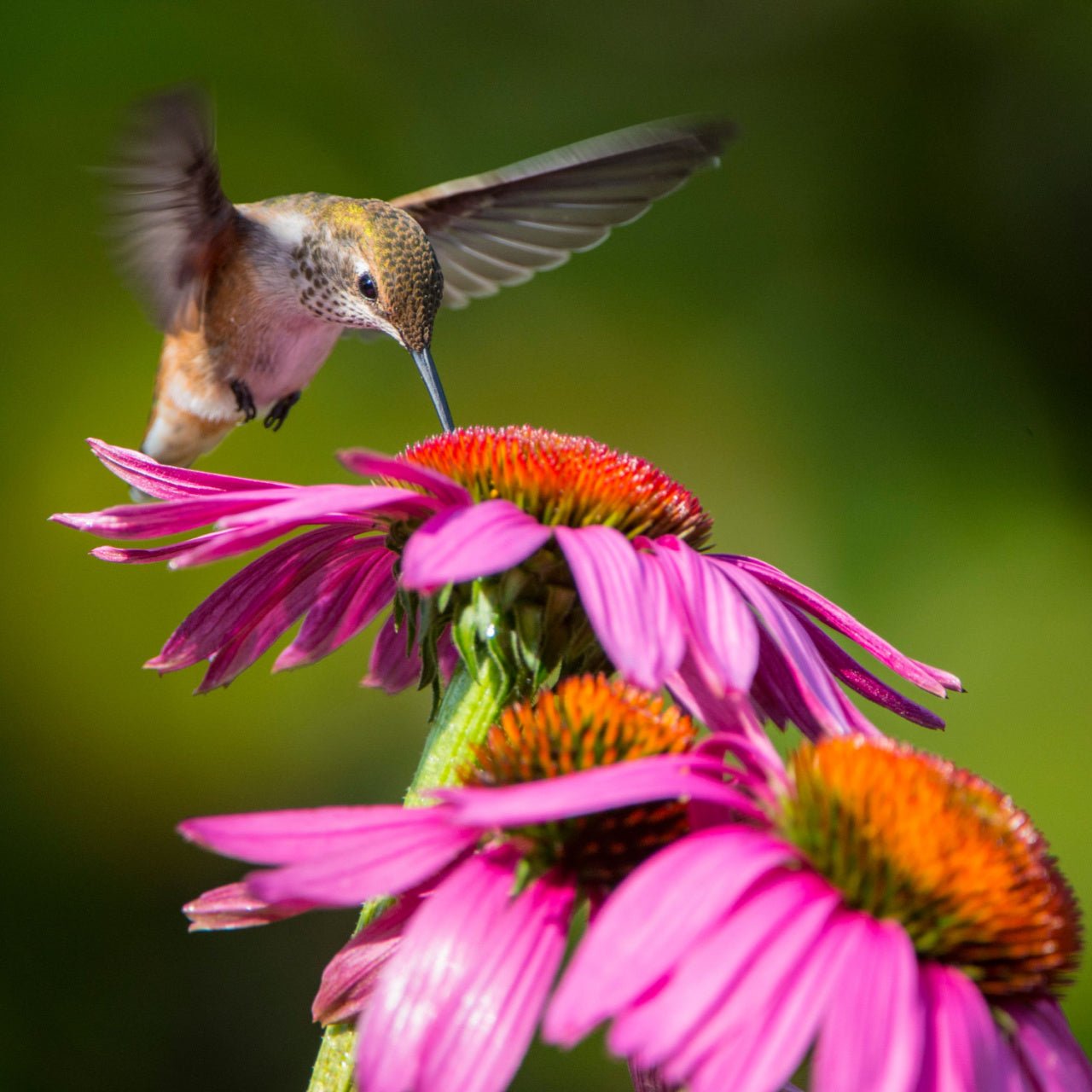




Staghorn Sumac
Vibrant red fall foliage
Unique antler-like branch structure
Excellent for erosion control
Thrives in
ZONE 3ZONE 4ZONE 5ZONE 6ZONE 7ZONE 8This plant ships:
November 20251 Year Guarantee on all plants
Staghorn Sumac For Sale
Staghorn Sumac (Rhus typhina) is a deciduous tree known for both its brilliant red orange color in the fall, and for its vertical red berries.
Plant Details - Staghorn Sumac
Family: Anacardiaceae
Light Requirement: Full Sun
Water Needs: Moist
Height: 20 – 35 ft.
Spread: 20 – 35 ft.
Growth Rate: Fast
Bloom Time: Spring
Flower Color: Yellow
Wildlife Value: Attracts butterflies, birds
Landscape Uses and Maintenance - Staghorn Sumac
The Staghorn Sumac is an attractive, native tree that is deciduous and low maintenance. This is a great tree to have, particularly in a bare landscape that wants to have a small thicket of Staghorn Sumac develop throughout the years, as it produces root suckers.
This tree has compound green leaves. The newest branches of this tree are covered by an almost velvety material, giving it its name – like the velvety fuzz of deer antlers.
This is a low maintenance tree that is often seen in disturbed areas such as roadsides, or in woodlands. These spots are great locations for you to plant your new tree! It is also a great option for creating a living privacy wall or hedge.
Plant this tree in a location that has full sun to partial shade. Avoid planting it in a location with full shade.
Plant in a location with well draining soil. Avoid planting in very wet, poorly draining soil, or in a location with compacted soil.
This tree is drought tolerant after it is well established. Make sure to water deeply when it is first planted.
This plant does not need fertilizer to grow but can benefit from a balanced fertilizer to help its overall health.
Bring the wildlife to your landscape! This tree will attract many pollinators and birds. Birds will love eating its dark red berries.
You can periodically cut this tree back to keep it to a smaller height.
Noteworthy Characteristics
The Staghorn Sumac will attract many butterflies. This tree is a host for the Luna moth and the Spring Azure butterfly.
This tree is great for supporting erosion control in locations that need more soil stability.
This Is How Your Plants Will Look upon Delivery

Bloom Season
Spring
Bloom/Foliage Color
Red
Height at Maturity
Under 25 Feet
Care
Staghorn Sumac thrives in well-drained soil with moderate moisture. Prune to preserve form and release dead or diseased branches. Once established, this hardy shrub is drought-tolerant, but regular watering during dry spells helps keep it healthy.
Plant Reproduction
Staghorn Sumac spreads by root suckers and seed dispersal.
Plant bare root trees during the dormant season in early spring or late fall (November through April). Dig the hole twice as wide as the roots so the soil is well-drained. Position the tree so the root flare is at or just above ground level. Fill the hole back with the soil you dug from and water. Maintain soil moisture, especially in the tree's early years, by providing deep, regular watering. Apply a 2-4 inch mulch away from the trunk at the base to retain moisture and suppress weeds. Prune trees during the first few seasons to establish strength and resilience, remove damaged branches, and continue maintenance pruning as the tree matures. Regularly inspect for pests and diseases and apply integrated pest management practices. Protect young trees from mechanical damage and extreme temperatures with tree guards, and stake them if necessary for support, removing the stakes after one or two years.
Shipping date depends on the date displayed and chosen when you order from the product's page.
We only accept returns on plants verified dead. If you think your plants have died, we offer a 1 year warranty, please use this File a Claim Link to verify dead plants and start with return warranty process.







Bold Foliage:
Its large, feathery leaves provide a dramatic touch and offer vibrant color throughout the growing season.
Striking Red Berries:
The clusters of bright red berries add a splash of color and visual interest, especially in the fall.
Unique Bark Texture:
The Staghorn Sumac features distinctive, fuzzy bark that resembles deer antlers, adding year-round texture to your garden.
Low Maintenance:
This hardy plant is resilient and easy to care for, making it a low-maintenance option for any landscape.
Caring Tips
How do I care for my Staghorn Sumac?
Each box contains detailed care instructions and information about your product. But here's the basics.
Care Tips
Staghorn Sumac thrives in well-drained soil with moderate moisture. Prune to preserve form and release dead or diseased branches. Once established, this hardy shrub is drought-tolerant, but regular watering during dry spells helps keep it healthy.
Light Requirements
Staghorn Sumac thrives best in full sun to partial shade. It prefers at least 6 hours of natural sunlight daily for optimal growth and vibrant foliage. While it can handle some shade, it will be less vigorous and may produce fewer flowers.
Hardy Planting Zones
3 • 4 • 5 • 6 • 7 • 8
Header
Use this content to share information about your store and products.
Frequently Asked Questions
How often should I water my plants?
How do I know if my plant is getting too much or too little sunlight?
What should I do to prepare my plants for winter?
What are the signs that my plant needs fertilizing?
How can I prevent pests from damaging my plants?
How do I choose the right plant for my climate zone?








